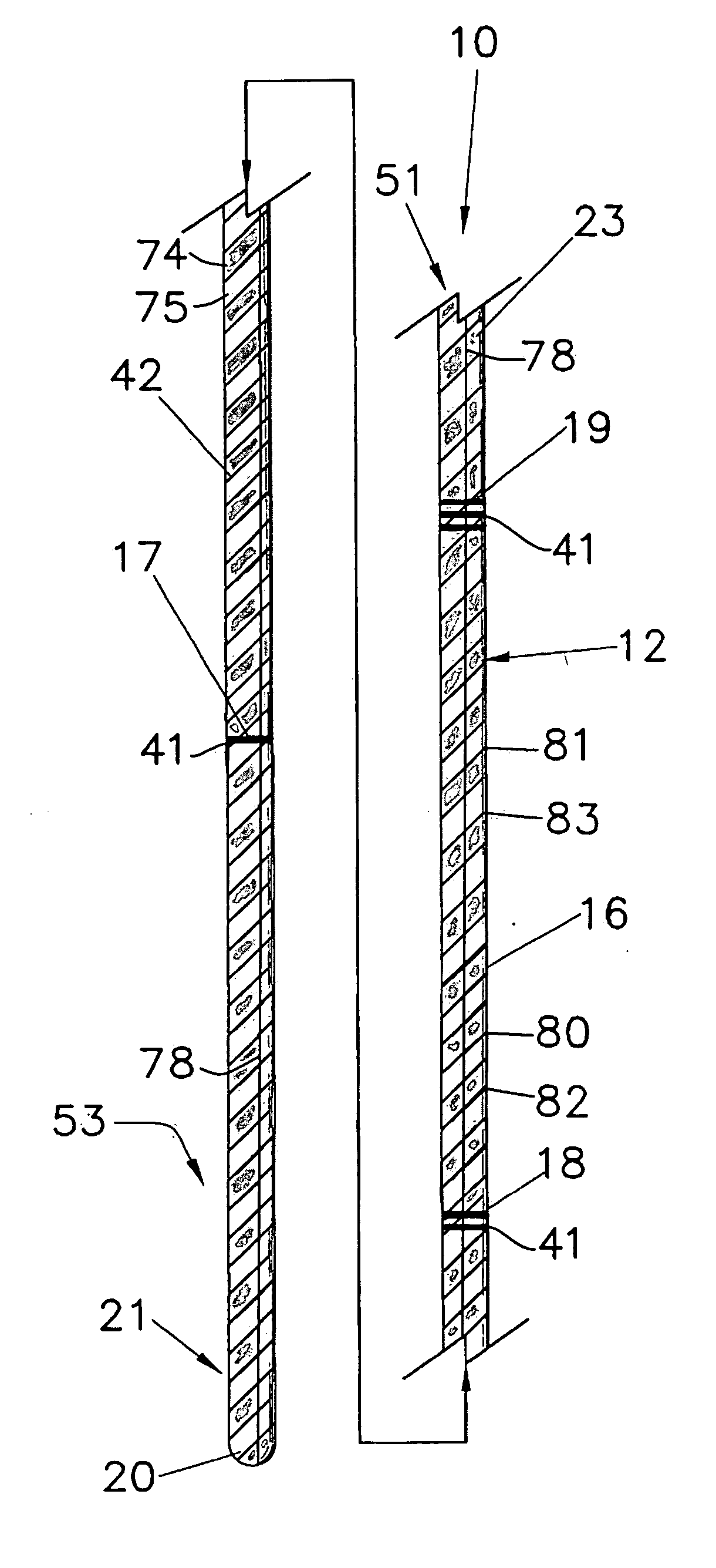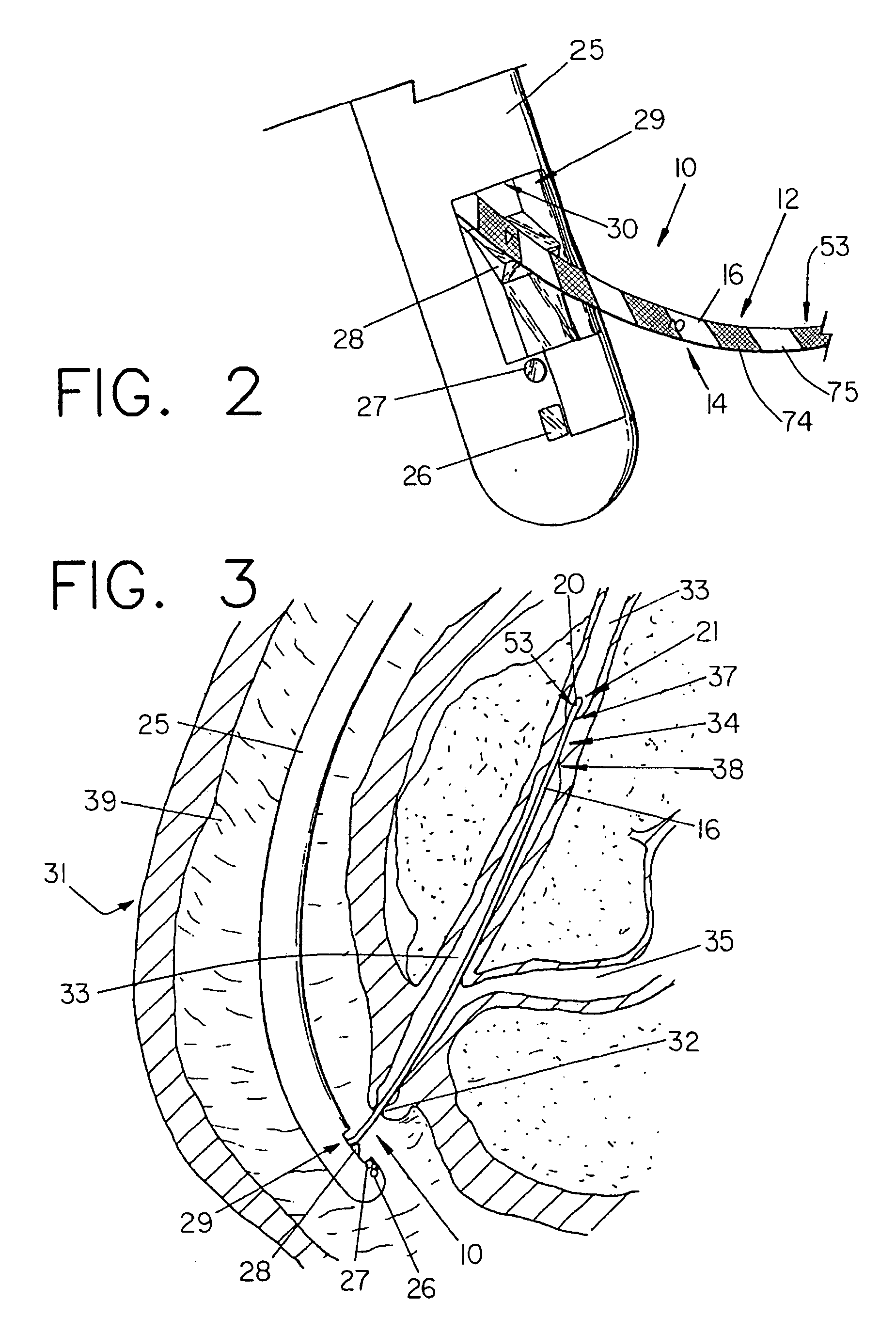Minimally invasive medical device with helical pattern for indicating distance of movement
a technology of helical pattern and medical device, which is applied in the field of minimally invasive medical device, can solve the problems of inability to quantify the amount of movement or make measurements within the body, the inability to direct measurement, and the tendency to become displaced
- Summary
- Abstract
- Description
- Claims
- Application Information
AI Technical Summary
Benefits of technology
Problems solved by technology
Method used
Image
Examples
Embodiment Construction
[0020]FIGS. 1-4 depict a minimally invasive medical device 10 comprising a wire guide 16 or similar elongate member having an indicia pattern comprising a multi-colored system of helical indicia 12 that allows the wire guide 16 to be used with an endoscope 25 to measure anatomical structures within a patient. The illustrative device 10 preferably comprises a standard exchange wire guide 16, e.g., 480 cm or 260 cm in length, with a solid core wire 50, such as nitinol, and an outer surface coating 42, such as PET or PTFE, that is shrink-wrapped over the wire (as is best shown in FIG. 4). To aid in fluoroscopic positioning of the wire guide 16, a distal portion of the device includes a marker material 21, either as a single marker, a plurality of markers, or an extended radio-opaque region that is several centimeters long (e.g., the distal 5 cm). Typical methods of providing radio-opacity include the addition of a distal platinum coil, adding gold or other radio-opaque material markers...
PUM
 Login to View More
Login to View More Abstract
Description
Claims
Application Information
 Login to View More
Login to View More - R&D
- Intellectual Property
- Life Sciences
- Materials
- Tech Scout
- Unparalleled Data Quality
- Higher Quality Content
- 60% Fewer Hallucinations
Browse by: Latest US Patents, China's latest patents, Technical Efficacy Thesaurus, Application Domain, Technology Topic, Popular Technical Reports.
© 2025 PatSnap. All rights reserved.Legal|Privacy policy|Modern Slavery Act Transparency Statement|Sitemap|About US| Contact US: help@patsnap.com



